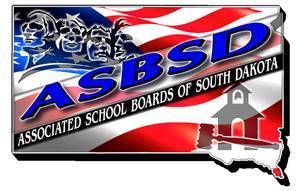A recurring theme of legislative committee hearings of the bill calling for the increase to the state’s sales tax is the lack of opponent testimony.
Similar to its House committee hearing, House Bill 1182, which increases the state’s sales tax by a half cent and reduces property taxes, had a line of proponents testifying in its favor during the Senate Appropriations hearing and no opponents.
Senate Appropriators sided with the supporters – who included all the state’s education associations along with the South Dakota Retailers, Chamber of Commerce, Cattlemen’s Association and Rapid City Chamber of Commerce – and passed the bill on a 7-2 vote.
“It needs to be done,” Sen. Larry Tidemann said. “This will take care of the teachers.”
The half-cent increase would generate more than $60 million in new revenue next year for school districts to put towards raising teacher salaries and would provide $34 million in property tax relief, which Gov. Daugaard Chief of Staff Tony Venhuizen could grow to as much as $50 million in 10 years based on inflation.
The half cent increase to the state’s sales tax, which has not been raised since 1969, would provide much needed sustainability to education funding, where other suggested avenues fall short.
“The only option that’s sustainable is the sales tax,” ASBSD Executive Director Wade Pogany said.
Several legislative appropriators have rebuffed the theory broached by Sen. Phyllis Heineman that money can be found within the state’s budget to fund education. Sen. Terri Haverly noted her review of budget figures found no sustainable dollars “left on the table” for schools.
Since the budget cuts of 2011, $2.2 million in additional, ongoing dollars was found in the state’s budget during the legislative session budgeting process to put towards education.
“I think we truly need to look at (HB 1182) as an investment,” SASD Executive Director Rob Monson said.
The proposal ensures 63 percent of the revenue generated from the state’s sales tax increase goes to school districts for teacher pay and mandates 85 percent of the new revenue percentage increase schools receive be spent on teachers.
S.D. Retailers Executive Director Shawn Lyons noted his group finds the proposal to have “good efficiencies and accountabilities.”
Additional accountability and efficiency in education funding is found in Senate Bill 131, which establishes a new funding formula based on a student-to-teacher ratio, adjusts provisions in the Capital Outlay fund, institute equalization principles for other revenue and set caps on general fund reserves.
Senate Bill 133, which supports teacher recruitment and retention programs, assists school districts in sharing services and expands online classes, rounds out the legislative trio in education funding increase proposal. SB 131 and 133 are awaiting review and vote in the House.
“Overall, it’s a product and a plan we can get behind,” Sen. Deb Peters said.
HB 1182 now moves to the Senate floor for debate and vote – requiring 2/3 majority (24 votes) to pass.
“I think the solution is before us,” Sen. Tidemann said. “It’s a solution that’s an investment.”
For updates on HB 1182, check out the ASBSD Blog, Twitter feed and Bill Tracker page.
